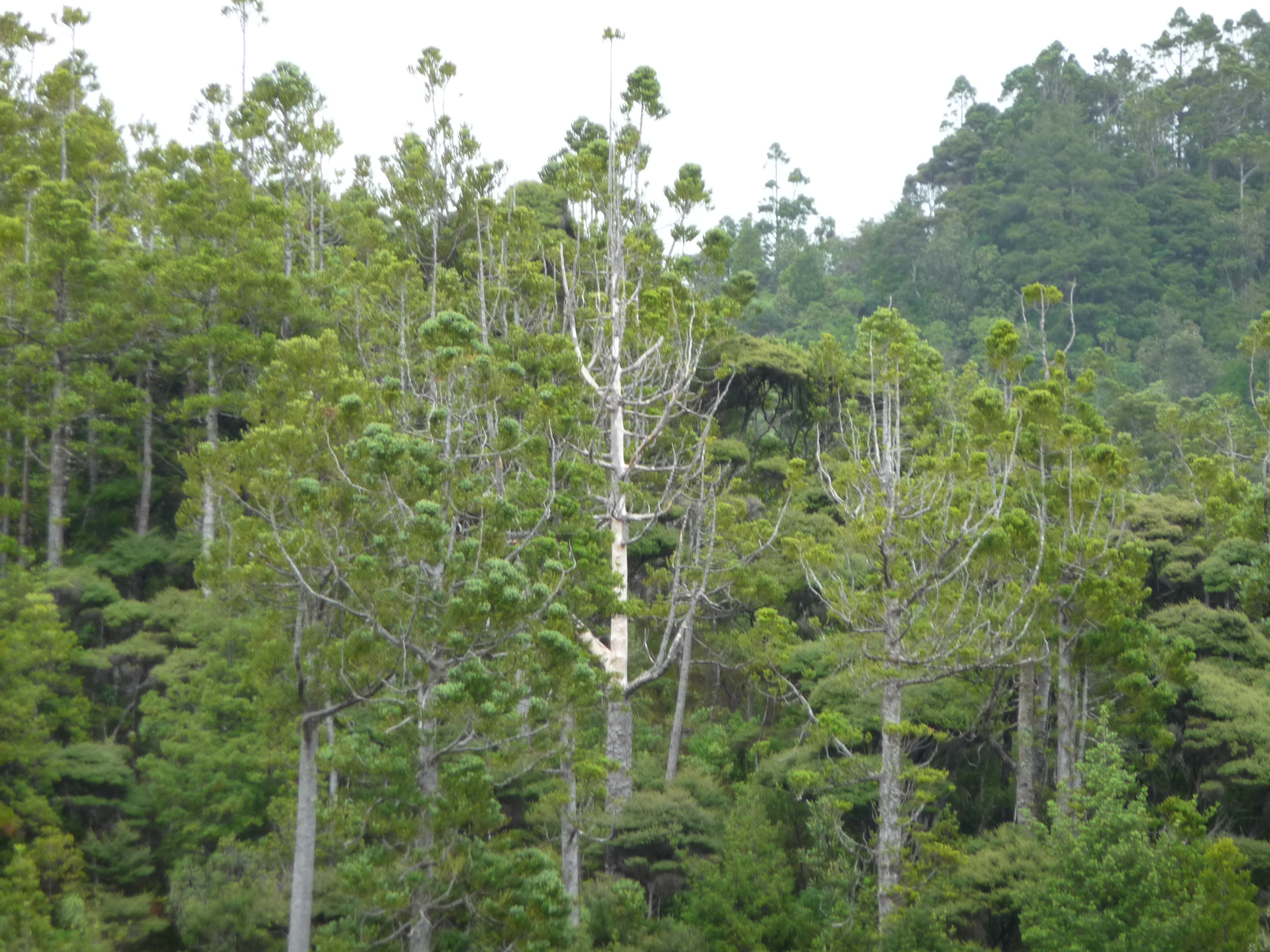Saving a Giant
New Zealand has joined a worldwide club – a club of countries battling serious forest pathogens. From ash dieback in the UK to the deaths of chestnut trees in North America, elms in Europe and North America, cedar in Oregon, plantation pines in Chile, up to 40% of the native flora of Australia and then to us – where an organism too small to see is killing our largest tree the kauri (Agathis australis).
It’s been called “kauri dieback”. For kauri it’s the latest threat to its existence following browsing by exotic pests, clearance for farmland, and logging for timber. In the 1800’s the kauri resource was regarded as endless. Clearly that was not true but it must have seemed so with hundreds of thousands of hectares of this most massive tree growing in dense, even-aged stands. Only 1% of kauri forest remains. So a new threat is really the last thing the giant kauri needs.
Kauri dieback is Phytophthora which is a root-nibbling organism most closely related to brown algae. A member of this same group of organisms caused potato blight in the Great Irish famine. Phytophthora’s enter the roots of a tree then travel up the trunk where they ring bark it starving the tree to death. It’s the ring barking, covered in oozing white gum, that’s the tell-tale sign a kauri has dieback. There’s lots we don’t know about kauri dieback – like the role of the climate, whether there’s any resistance or where the disease is from. But we do know that dieback lives in soil and that any movement of soil can spread dieback. Mountain bikes tyres, tramping boots, vehicle tyres, horse shoes, potted plants, topsoil, and pigs hooves are all potential movers of dieback.
Someone once told me they didn’t believe in kauri dieback. I think they were saying that in nature sometimes diseases kill things and I suppose they meant any attempt to change that is futile. It’s certainly much easier to pretend nothing is wrong or that we can’t do anything about it– but if you’ve stood under some kauri that now looks like a bunch of telephone poles you can’t really ignore it. We know dieback lives in soil, we know we can stop it spreading by cleaning things that spread soil. Why wouldn’t you do all you could to save kauri?
The Auckland Botanic Gardens are celebrating kauri until the end of May with a display, a school holiday trail and two public dieback awareness days. We’d like do our bit to protect our local forest – the Hunua Ranges – which are the largest forested area in Auckland that’s dieback free. Indifference will not save this giant. It only takes a few minutes to clean our gear and do our very best to ensure future generations see the mighty kauri.
For more information see here – http://www.eventfinder.co.nz/2013/kauri-dieback-information-day/auckland/manurewa

